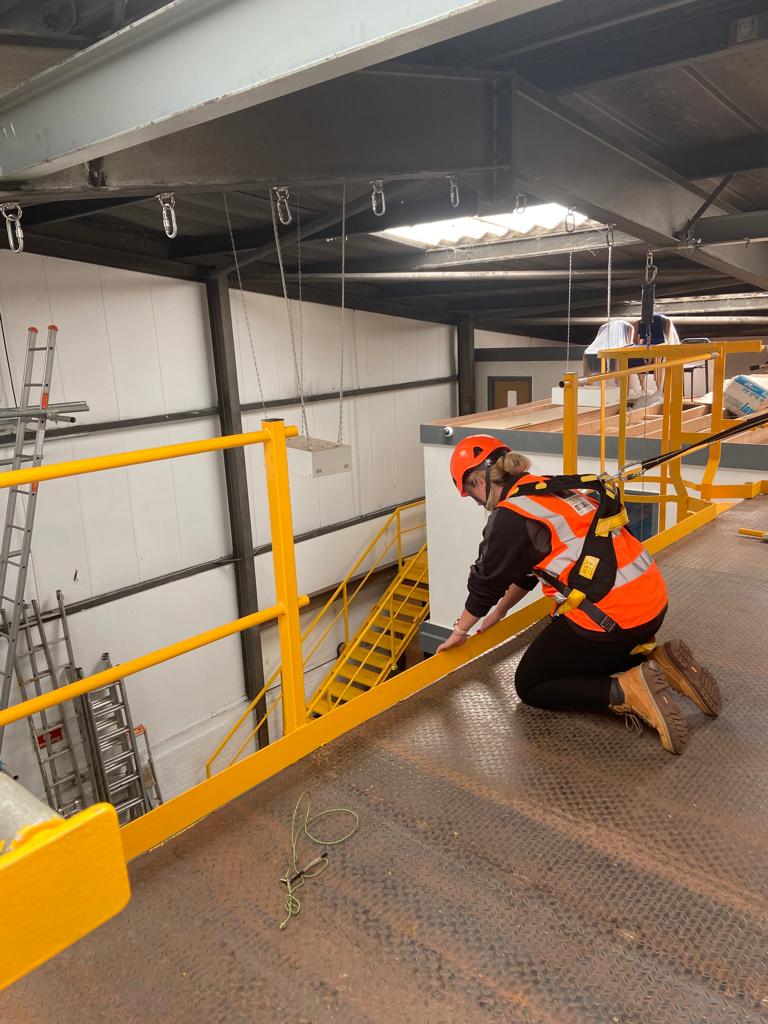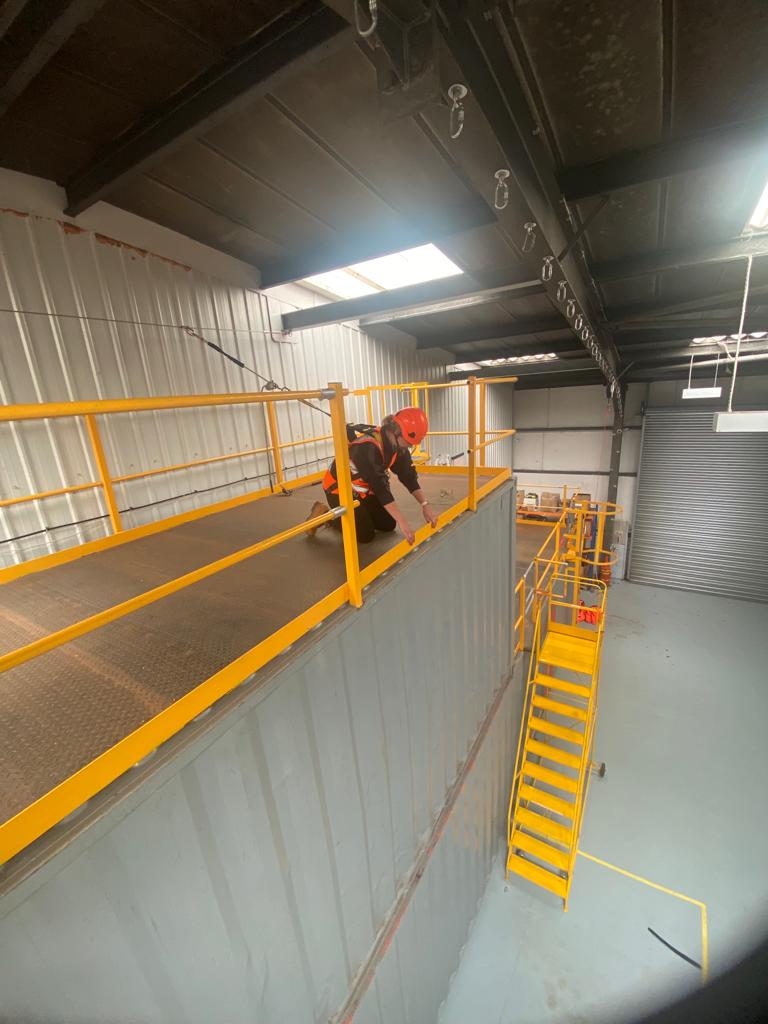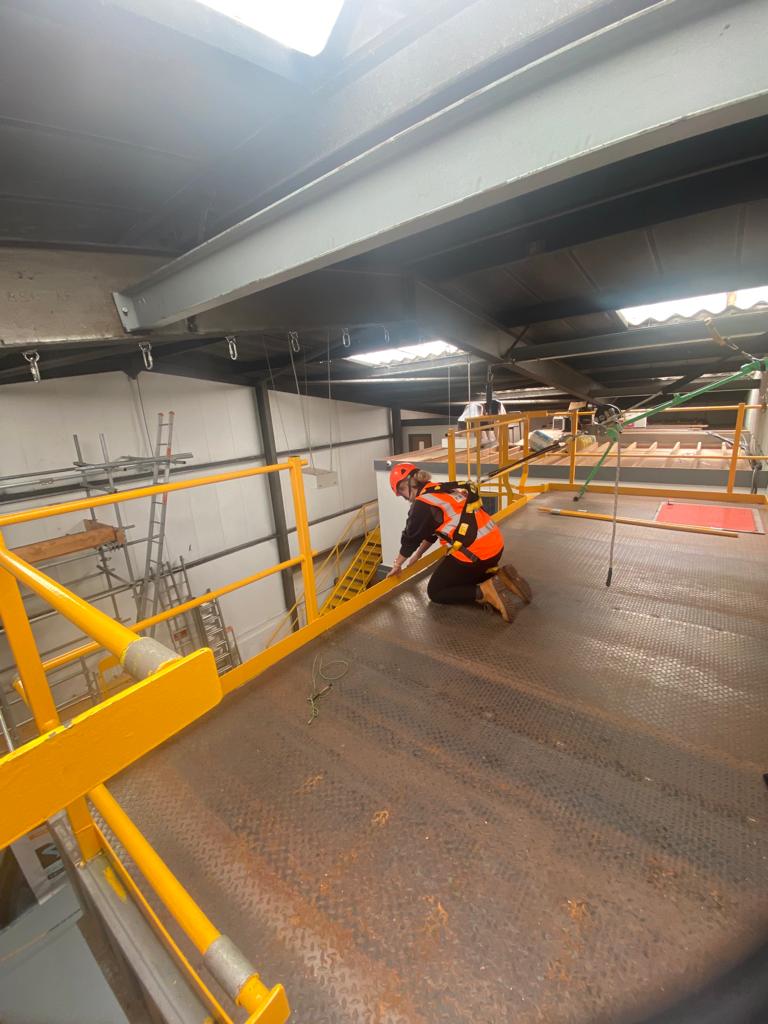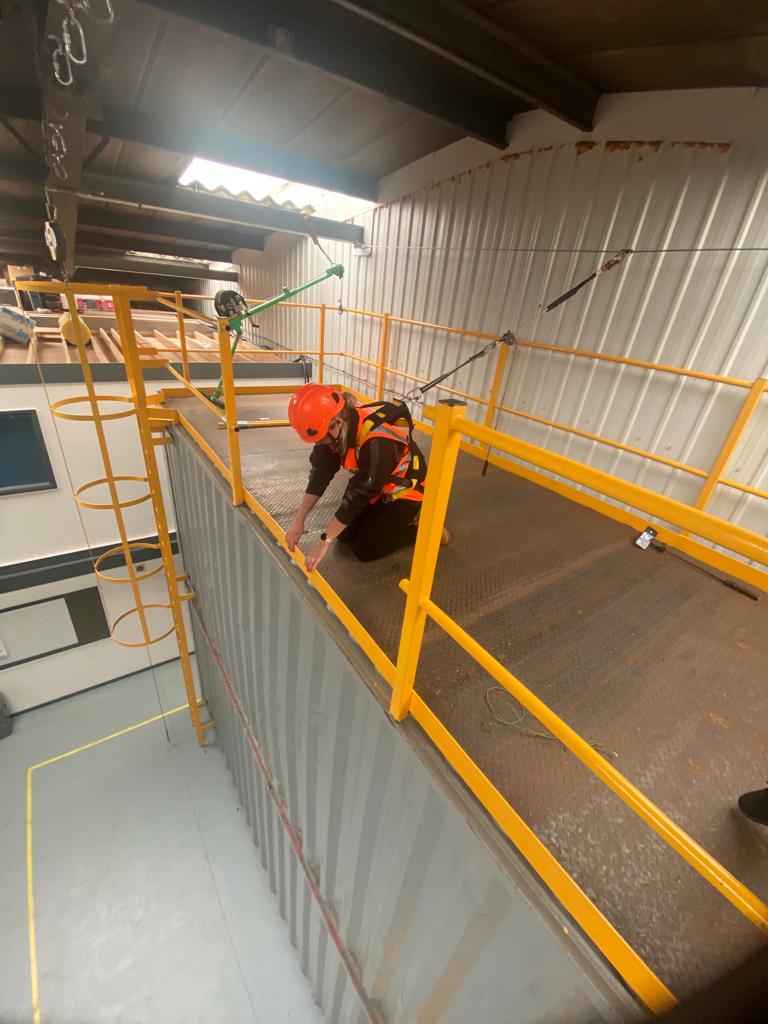When looking at a hierarchy of controls for working at height “Eliminate, Engineer, PPE” restraint trumps Fall arrest every time. It is generally accepted that by restraining a person from a risk of a fall reduces the risk to the user, and that is largely true, however, the potential to misunderstand the limitations of equipment by the user does increase significantly, therefore specific training and understanding is essential.
What is Restraint?
Restraint is the provision of PPE, usually a fixed length rope or webbing lanyard that physically restrains the user from a hazard. Typically, a leading edge, in simple terms the user is suitably restrained that regardless of position, seated or standing they cannot reach the edge.
Often a work activity requiring access to an exposed edge is categorised as restraint by default and restraint only PPE is provided when the user is still exposed to the risk of a fall.

One example (pictured) is, using a flexible horizontal lifeline to provide freedom of movement parallel to the edge, whilst allowing the user access to the edge with his hands.
The problem here is that when the user stands, he can potentially get his feet over the edge, creating a fall risk, which in turn will stretch/deflect the horizontal lifeline allowing for a fall on equipment not designed to mitigate the impact of a fall.
Complications
It is also worth considering that restraint can be a somewhat of a blunt tool if presented with multiple hazards or leading edges.

See example (pictured) where the user is facing 2 leading edges and to maintain restraint has been given 2 horizontal lifelines and 2 adjustable restraint lanyards which would require continued adjustment to maintain restraint in relation to their position.
Complexity of use
It is worth considering, the more hazards and an increased variety of risks that present to a user then the more complex the restraint solution must become or the greater the selection of equipment they have to draw from.
As a result, it is essential that the user is competent to use the equipment and fully understand the use, and risk and can make the correct choices.
Equipment Selection
Ensure restraint lanyards are used only when they can provide 100% certainty the user cannot fall. Typically, a free fall greater than factor 1 on a restraint lanyard will create a dynamic load of around 1.6 tonnes. This would cause significant injury to the user and potentially cause the anchor to fail. EN795 Anchors are typically rated to 1.2 tonnes (unless otherwise stated) and only designed to take a dynamic load of 6kN (600Kg). It is much better to use fall arrest equipment (shock absorbing) when there is an element of ambiguity and simply work to restraint principles. There is much debate that Fall Arrest or shock absorbing lanyards must not be used for restraint because the user could ‘deploy’ the shock absorbing ‘tear out’ element under normal use. This is untrue, the shock pack will not deploy under normal use and is designed to deploy under dynamic loads greater than circa 2kN (200Kg) and reduce force to a maximum of 6kN (600Kg).
Conclusion
It is often easy to forget that the user is there to perform a job. The pursuit of restraint over Fall Arrest is not always the best solution and can increase the risk of misuse significantly due to user complacency, always consider complexity of the solution because the best solutions are almost always the simplest ones.
Human error along with the expectation of the workforce to adopt complex solution is one of the weakest links in the chain and assessing the competence of the work force is a key factor to consider. The best, market leading equipment will not guarantee the users ability to take the necessary steps to ensure its proper use. Keeping training requirements up to date and managing workers health and wellbeing will minimize the likelihood of user complacency.
Mike Horrocks
Zero Gravity Safety Ltd
01/08/2023





